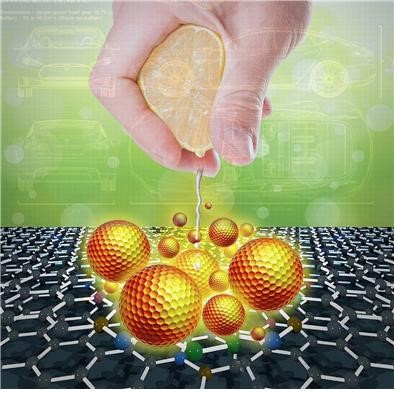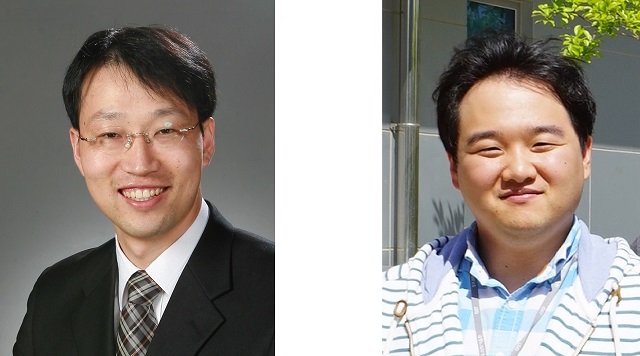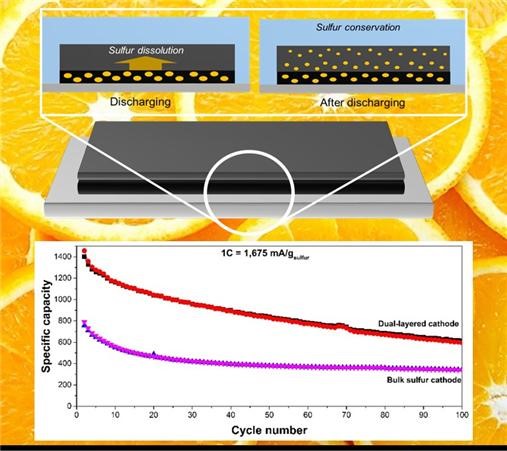Media Center
A multimedia mosaic of moments at GIST
GIST Excellence
[Press Release] Utilizing vitamin C to develop lithium-sulfur batteries for electric vehicles
- 엘리스 리
- REG_DATE : 2015.05.20
- HIT : 712
Utilizing vitamin C to develop lithium-sulfur batteries for electric vehicles

(Figure1) This image depicts the idea behind the research of utilizing vitamin C as an energy source. Orange represents vitamin C, yellow spheres represent sulfur, and the hexagonal structure represents graphene.
Korean researchers have developed a new type of lithium–sulfur battery that uses vitamin C with a 20% improvement in performance over current batteries.
A group of researchers led by Professor Jaeyoung Lee from the School of Environmental Science and Engineering at GIST said that they succeeded in improving the energy capacity of lithium–sulfur batteries with vitamin C treated dual-layered graphene–sulfur. The research was conducted by Jin-Won Kim, who is a Ph.D. candidate, and the project was supported by the National Research Council of Science & Technology. The research has been published in the ChemSusChem online journal on April 29, 2015, with the title ‘Improvement of energy capacity via Vitamin C-treated dual-layered graphene-sulfur cathodes in lithium sulfur battery.’

Professor Jaeyoung Lee (left) and Ph.D. candidate Jin-Won Kim
Lithium-sulfur batteries are widely considered to be a viable replacement for current lithium-ion batteries for electric vehicles because of its higher energy density. Yet, lithium-sulfur batteries have not been actively used in the field because there are several problems that need be resolved first, such as poor cycle performance and low charge/discharge rates.

(Figure1) Dual-layered cathode

(Figure2) Data showing the polysufide that occurs during charging and discharging
However, the researchers showed that their vitamin C treated dual-layered cathode, which is composed of a sulfur active layer and a polysulfide absorption layer, can dramatically increase sulfur utilization, resulting in a lithium-sulfur battery with a high specific capacity of over 600 mAh gsulfur (-1) after 100 cycles even under a high current rate of 1C.
Professor Jaeyoung Lee said, “This development is meaningful in the sense that it can greatly improve low cycle performance of lithium-sulfur batteries, which is a big obstacle in their commercialization. We expect this new development to help increase the adoption rate of lithium-sulfur batteries in the next-generation of electric car batteries.”